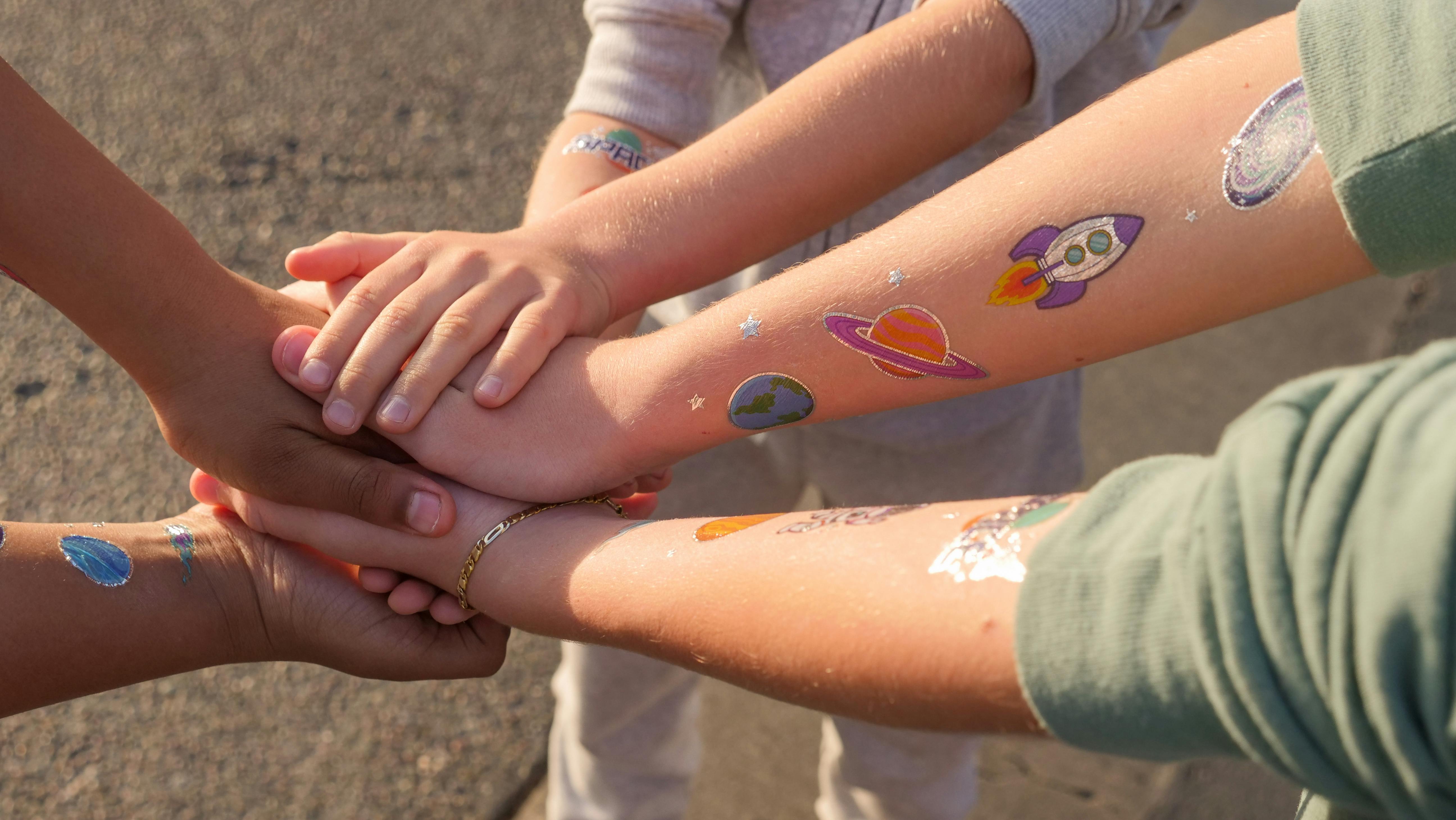Irish christening gowns: much more than shamrocks and lace
Irish Christening Gowns feature inspiring designs and generations of craftsmanship. Celtic christening gowns look stunning with embroidered shamrocks and Cluny lace. Although traditional, its charming Irish style allows flexibility. Christening gowns can have shamrock lace, a shamrock insert, or other shamrock details. Dresses can have Victorian lace, Irish lace, or Venetian lace.
Irish symbols can include Celtic crosses, Claddagh, Celtic knot, or other Celtic symbolism. Irish christening gowns, like Celtic wedding dresses, are adorned with ‘shingerleens’ (Irish lace trim, embroidery and ribbons). Some Irish parents have the family crest or the names of the wearers embroidered on the christening gown, cape or blanket. The Irish christening gown symbolizes purity, joy, faith and new life.
Irish Christening Gowns
. Clover
The shamrock is one of the best known and most popular Irish symbols. Symbolizing the Trinity, the shamrock generally adorns Irish christening gowns. The shamrock can be woven into the fabric or appear in one or more places of the dress.
Shamrocks, whether green or white, can decorate everything from christening gowns and rompers to headbands and christening bibs. Satin dresses with an organza overlay can have scattered shamrocks and tiny pearls. Often times, the bodice of an Irish christening gown will have embroidered shamrocks.
Floral shamrock embroidery can fill the bodice, sleeves, and skirt of a christening gown. You can choose christening fashions with a lot of shamrocks or just a few, even dresses with a single shamrock. A boy’s sailor-style soft gabardine christening romper may have embroidered shamrocks and shamrocks on the chest. The matching christening hat can also sport a shamrock.
. Cord
Irish baptism dresses use all kinds of lace, from French lace to Venetian lace. Irish Cluny lace is a cotton lace. With a light and airy look, Cluny lace resembles crochet stitch.
Irish christening gowns can feature beautiful lace in an elaborate style. Vertical lace can create separate ‘panels’ in a skirt that are deeply scalloped, each with different embellishments. The center of the front can be impressive with a cross decorated with embroidered ribbons and beautiful flowers. The side panels could have lace in the form of a Celtic pattern and more lace can adorn the scalloped hem.
. Irish flax
Linen is a special fabric that has been woven from natural flax fiber for thousands of years. Linen is woven all over the world and is a strong and durable fabric. With its expert spinning, weaving and finishing, Irish linen is recognized as the finest linen in the world. Fine linen from Ulster, Ireland, is a favorite for Celtic christening fashions, including hats, slippers, and booties. The 100% pure Irish linen can be decorated with small embroidered Celtic knots, a row of shamrocks or rosebuds and pretty pearls.
A beautiful Irish linen dress is a delight with delicate beading of Venetian lace and shamrock lace with an embroidered Celtic cross with trinity knots and shamrock appliques. An Irish linen christening gown may have Victorian lace crosses and hearts scalloped at the hem. A beautiful little set of pants and a grandfather shirt (with a ‘grandfather’ collar) can be made from pure Irish linen.
. Crochet
Crochet will often appear on Irish christening gowns (sometimes called ‘dresses’ in Ireland). The bodice, crocheted from fine mercerized cotton with a hint of glitter, can feature a clover insert with picot chains and a satin ribbon at the front. Crochet was introduced to Ireland in the mid-19th century.
Women and children were trained in art. Within a few years, the Irish had become skilled enough to supply the markets of Dublin, London, Paris, Rome, and New York. Crochet work helped supplement the family income. In fact, some Irish people used the money to emigrate to the United States.
. Pucker
Although Celtic christening gowns can have intricate details, the ruching gown is also a longtime favorite in Ireland. Crafted from fine Irish linen, featuring a three-pin hem detail, a lace-trimmed low slip, and a matching beanie, this simple style can reflect an air of elegance. Exquisite hand embroidery can adorn the bodice, bonnet, and sleeves of a soft, ruched christening gown.
. Celtic cross
The Celtic Cross appears everywhere in Irish baptisms. The Celtic cross (or high cross) is a much loved Irish symbol. Perhaps a single Celtic cross could be in the center of a skirt with white (or light green) shamrocks around the hem.
Crossed shamrocks can rest on a bodice underneath a Celtic cross with heirloom leaves on either side. Clovers and leaves can continue around the hem of a christening gown. A boy’s christening romper may have embroidered Celtic crosses or his satin shoes may sport a Celtic cross.
The Celtic cross is believed to signify the four directions of the wind, as well as the four seasons. The first known Irish high cross dates back to Donegal. The 7th-century Carandonagh Cross was part of a hermitage in the northwest of the county.
. Celtic knot
The Celtic knot is a favorite adornment for Irish baptism attractions and accessories. The Celtic knot design has been found on Celtic jewelry, even since before the time of Christ. The Celtic knot is associated with the ornamentation of early Christian monuments and manuscripts (such as the 8th century Book of Kells). This Irish symbol is believed to protect against evil – the more complex the knot, the greater the protection.
The Celtic knot can appear on the bodice of a three-piece christening gown with puffed sleeves and a Celtic floral lace trim. Even a blue Celtic knot cross can appear on the bodice of a dress. Sometimes red roses surround a blue and gold knotted cross, while a shamrock, claddagh, and thistles surround the hem. Often, under a central cross, the baby’s name and the christening date will be embroidered on the dress. Trinity Knots can be embroidered on the chest directly below the collar on christening rompers.
. Claddagh
The Claddagh (a symbol of ‘holding hands’, a sign of friendship and love) is always seen in christening fashions. A beautiful christening gown can have a satin ribbon band on the front yoke with a Claddagh applique. Also, christening accessories use the claddagh as in a crystal rosary. bracelet with pearls, cross and claddagh charm.
. Celtic tree of life
The Celtic Tree of Life is another Irish symbol that can be applied to a christening gown. The Celtic tree of life is supposed to convey wisdom. The symbol is believed to convey messages from the gods.
. Cross of Santa Brígida
The Cross of Saint Bridget is a familiar Celtic symbol that appears on Irish baptism dresses. Brigid’s crosses are associated with Brigid of Kildare, who is revered as one of Ireland’s patron saints. Made from pure Irish linen, a christening gown may have a pinned skirt, satin bows at the back, and a St. Bridget’s cross embroidered on the bodice.
. Tara Embroidered Brooch
Christening capes can use embroidery inspired by the Tara Brooch, one of Ireland’s best-known antiques. Believed to have been made about thirteen hundred years ago, the true Tara is an ornate Celtic ring clasp made of gold, silver, copper, amber, and glass. The brooch was found on the seashore at Bettystown, south of Drogheda, and is now kept in the National Museum of Ireland in Dublin.
. Christening capes
Christening capes, especially the Kinsale cape, are popular with Irish babies. For hundreds of years in rural Ireland, wearing a long hooded cape was a tradition. In fact, mantles can still be seen in the area west of County Cork.
. Spirals
Pretty swirls float gently over Irish christening gowns. Featured in ancient Irish artifacts, Celtic spirals are second only to knotty designs as the symbols most associated with Celtic art. Without any written history about the spirals, there is still some mystery surrounding their meaning. Within the Druid faith, writing sacred material was forbidden. Without a doubt, the spirals represented something sacred to the Druid people.
Most scholars believe that due to their simplicity, spirals are symbols of the spiritual balance between inner and outer consciousness, the sun, and the cosmos. Some scholars of Celtic art believe that the meaning of the spirals may lie in their direction. Clockwise spirals can be associated with the sun and harmony with the earth. Spirals counterclockwise can be associated with manipulation of nature. Other people think that the Celtic spiral symbolizes the seasons of life and the cycles of time.
Celtic spirals are often seen in ancient burial mounds and sacred places. Many believe that spirals have mystical powers that prevent evil from entering a sacred tomb. In 1991, archaeologist Kate Johnson of Arizona State University carried out a computer analysis of the structure of some Celtic spirals found in ancient rock carvings. He compared these spiraling patterns to astronomical events that had occurred over the course of the last millennium. According to their research, Celtic spirals were accurate representations of visible planetary configurations and the brightest fixed stars during total eclipses centuries ago.
The Triskele (or triskelion) is a three-pointed spiral that is often used as the basis for more complex spirals. Some suggest that ancient Celtic triskeles represented the Triple Goddess of the three ages of womanhood. Later, the symbol came to represent the Holy Trinity in Christianity: God the Father, the Son, and the Holy Spirit. The motif is based on the number “3”, considered a sacred number in many ancient cultures.

